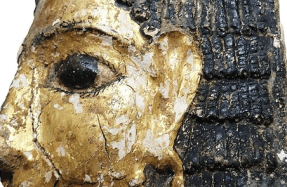
ONE OCTOBER MORNING IN 336 B.C., the small theater at Aigai, the ceremonial center of ancient Macedonia, began to fill with honored guests. They had come from across Greece and the Balkans to attend the wedding celebrations of King Philip II’s daughter. A day of entertainment was to follow the wedding, and every seat was taken well before dawn. As the sun rose, a royal procession entered. With the atmosphere reaching fever pitch, Philip finally made his entrance. This was meant to be a triumphal moment, the pinnacle of his career. Philip was already the most successful Macedonian king ever. During his 24-year reign, he had invigorated the army, built up the kingdom’s infrastructure, and expanded Macedonian control across the northern Aegean. Now, he was poised to invade Persia. But then, an assassin struck. A rogue bodyguard rushed the king and drove a knife into his chest. Philip fell to the floor, dead. In the tumultuous aftermath, a new king was proclaimed: Philip’s son Alexander. The new king was young, only 20 years old, but he had already led armies and founded his first eponymous city. During his father’s exceptional reign, Alexander had accrued all the skills and experience necessary to make his own mark upon history. He would come to be known as Alexander the Great.
Alexander, who ruled from 336 to 323 B.C., is renowned for his 11-year campaign in Asia, during which he conquered the Persian Empire before dying mysteriously in its capital city of Babylon at the age of just 32. Little is known about Alexander’s early life in Macedonia. Ancient sources provide the story’s bare bones, but a series of archaeological discoveries in northern Greece, which today encompasses the territory of ancient Macedonia, is transforming scholars’ understanding






